Online sales of beauty and self-care products is climbing year on year and its consumer habits and trends are shifting. Knowing more about this will help you to understand more about the industry, where it's heading and what 2021 might have in store.
Read on to find out some key statistics and useful information around the beauty and self-care industry.
Beauty and Self-Care eCommerce Overview
Set to be the 4th biggest eCommerce industry, beauty and self-care is massive and plays a monumental part of the eCommerce sphere.
The percentage of consumers who bought a cosmetic product throughout 2020 is 31.3% (source: Alioz). Despite the global pandemic, which saw people covering their faces with masks and leaving the house less often, sales of beauty and self-care has continued to grow year on year:
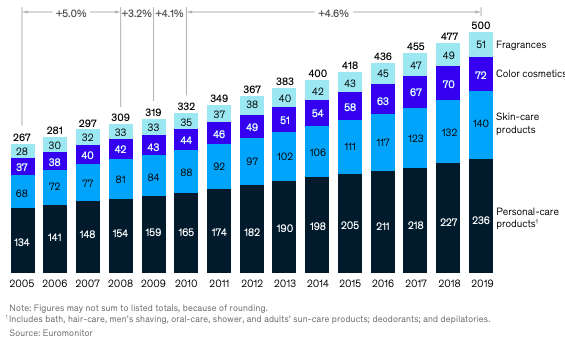
Source: McKinsey & Company
These look like surprising stats, but on average the beauty and self-care spend sits at a staggering $3000 a year per person.
That’s not all either, it is predicted that by 2025, the beauty industry will see $716 billion in sales (Statista). Why? There are a number of reasons including the year on year trends we have seen to date and what Estée Lauder referred to as the “lipstick effect’"wherein people turn to small acts of satisfaction during an economic downturn to help them feel better.
Return to top of page or Supercharge your Data Feed with our ebook
The target market and current trends
First of all, it’s worth noting that the audience for makeup sales is diverse and inclusion is set to be one of the biggest trends for 2021. However, let’s dig deeper into some of the trends that we are seeing from the typical consumer.
Surprisingly, there has been a decline in cosmetics sales as the industry is seeing a shift to a skincare-centric approach to beauty. This is largely being driven by ‘Gen Z’ who are turning away from makeup. The typical inflated spend by teenagers and young adults tailed off and a surge in skincare has been seen instead.
Despite the decline, the cosmetics category currently makes up the majority of beauty and self-care spending with Retail Dive reporting the category counts for 51% of the industry’s net sales, followed by skincare, bath and fragrance making up 21%, haircare at 19%, salon services seeing 4%, and “other” receiving 5%.
Another surprising fact we have seen over 2020 is how beauty purchases are not a straight-forward process. You would be forgiven for thinking that they are more likely to see impulse purchases but according to Kinsta, 85% of customers start a purchase on one device and finish it on another.
Where should I be selling?
So you’ve set your heart on selling products in the beauty and self-care industry? The next thing to think about is how and where you’ll be selling your products.
The answer to this question is down to the products you’re looking to sell, your target market and your internal resources.
eBay - You are likely already familiar with how eBay works. You can sell items as either an individual or a business. A huge advantage to eBay is the vast quantity of people using the platform as well as the site providing its own marketing to help increase the number of visitors on the site. the main disadvantage is selling costs. For every sale you make, you do have to pay eBay which can seriously eat into profit margins. You will also be competing with individuals selling unwanted beauty products.
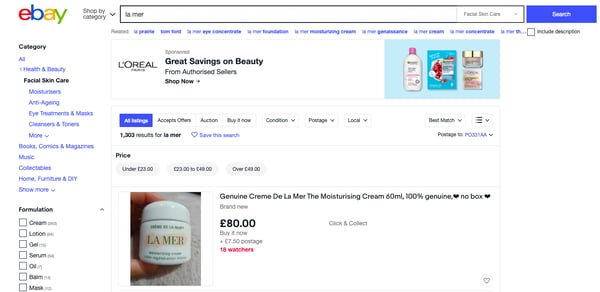
Amazon - much like eBay, Amazon is a hugely popular site with a lot of people browsing products. The large plus point for selling on Amazon over others is how well FBA (fulfilled by Amazon) works for smaller items such as cosmetics. This can take away massive logistics hassles. However, you are paying Amazon per sale.
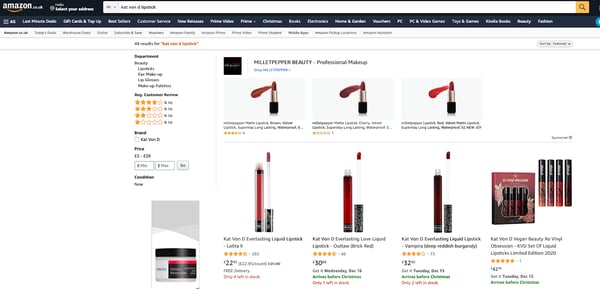
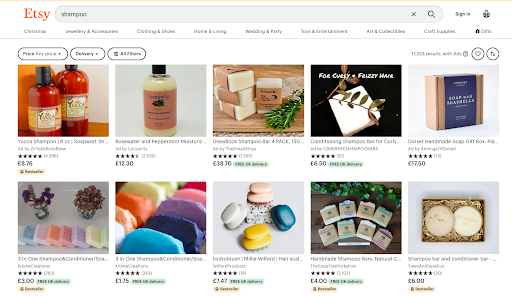
Your own site - For the more tech-savvy retailers, having your own site can give you wonderful opportunities to nail your branding and generally have a lot more flexibility in the way you showcase your products. The downside is there is a certain level of technical capability needed. You could pay a developer to create your site, but this has a large outlay cost which could take a long time to recuperate if your products see a fairly low volume of sales at first. It also comes down to you to deliver your own marketing as your site is unlikely to get a huge amount of traction organically right away.
Marketing your beauty products
There are a multitude of platforms and opportunities to exploit when it comes to marketing your products. The key thing to bear in mind is reaching people at all levels of the consideration process. You can display your products to people who may not be aware of your products but display interest in beauty, show up when people are looking for products you sell and anything in between. Here are some ideas/platforms to get you started:
Make use of the image-driven platform with exciting, enticing visuals. You can upload wonderful images that you have taken, share your customers images (with permission) and create an Instagram shop so people can purchase directly from the platform.
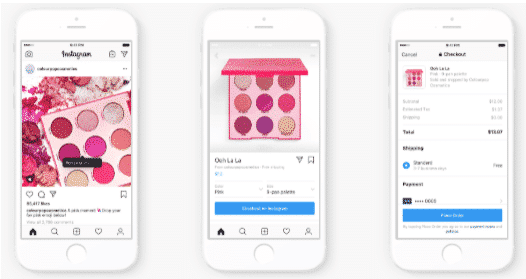
Influencers
There are a lot of influencers in the beauty and self care industry. Depending on the following they have, you may need to pay them or simply send some products to them. From there they can share their experience with your products to their followers.
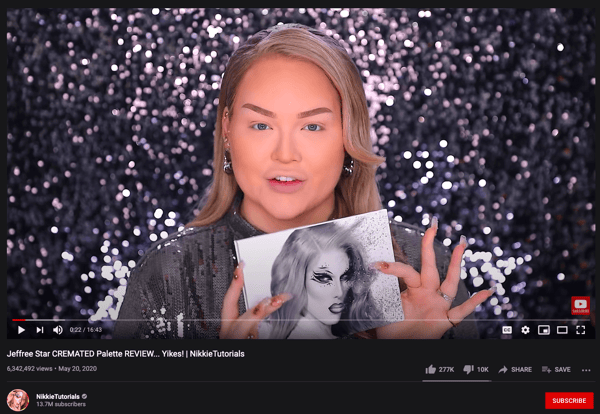
Google Shopping
Moving from awareness to driving sales, Google Shopping is a great way to show up when a potential customer is looking for the products you sell. It works by matching your products to the user’s search and showing them items in the search results.
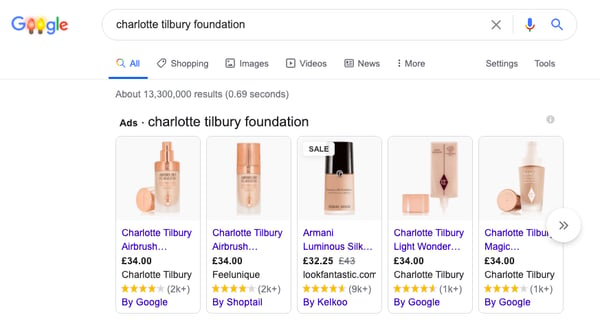
An added bonus, you can use your feed to populate these adverts (more on feeds later).
Other marketing opportunities
The above is a very short list of the vast array of advertising opportunities. Other platforms you could be (and should consider) using include:
Return to top of page or Supercharge your Data Feed with our ebook
Best Practices for Sellers
The beauty of the Internet is there's a niche market for everything, and if you can focus on it, you can build a sustainable and viable business of it
As you can see there are huge opportunities, here are some pro tips to make the most of your space in the beauty and self-care market.
- Get your website appearance just right. You will need to bear in mind your target audience with its design. Make it young and hip, you’ll put off the older generation, for example. Typically, the trend for beauty websites is to ensure everything is incredibly easy. No complicated menus or unusual navigation, make the imagery clear and use opportunities to add in calls to action and upsells to increase the average order value.
- Communicate with your customers. Offer support via both social media, phone, email and live chat. Remember that the generation driving skincare (Gen Z) are typically introverted so if this is your audience, make sure they can reach your quickly from behind a screen.
- Think about tactics that can help you boost sales. Usually these will be very customer-centric; offer free samples, make your returns policy easy and understand your target market and communicate to them on their level.
Data feeds for beauty products
When it comes to your beauty products, having a feed and inventory management system can be incredibly helpful.
A feed is essentially an inventory of your products, key attributes and availability. The chances are, if you are in the beauty industry, you have a wide-range of products with multiple SKUs (different colours, sizes, etc.). This can make manually managing stock levels and marketing specific products a headache. This is where a feed can help. By automating stock levels, you can be aware of you need more of, what has been stagnant in sales as well as ensuring you’re not advertising products with depleted stock.
To be in with a better chance of reaching customers in this highly competitive market, it is a good idea to optimise your feed. To do this, try the following:
- Take good quality images - beauty is incredibly visual and customers will buy with their eyes. Try to take your own quality images and ensure that you are using models within your target market. If, for example, you are selling products to women over 50, avoid using a model in her 20s.
- Optimise your titles. You want to ensure you have the key features that people are looking for in your title. A great way to order your title is with the following; Brand + Product Type + Attributes (colour, etc.) Remember to avoid any “fluff” words such as ‘gorgeous’, ‘worn by models’ and so on.
Make the most of your product description - this isn’t the opportunity to stuff a bunch of keywords in or to write reams of content. Instead, try to include useful headings that break up the text and helpfully answer any questions your customers might have. Making it easy to read is key - this will keep customers happy as well as platform algorithms.
Return to top of page or Supercharge your Data Feed with our ebook
Conclusions
As we can see from the above the beauty industry is evolving in ways we may not have predicted but in terms of growth, it remains resilient. This means that beauty and self-care is a fantastic retail opportunity. Understanding your customers and reaching out to them in their space is essential and could be very worthwhile.
You May Also Find Interesting:
- How to Optimize Your eCommerce Jewelry Listings
- The Importance of eCommerce To The Electronics Industry
- Grocery and eCommerce: Capitalising on the dough and bringing home the bacon
- Inside The eCommerce Automotive Industry Landscape In 2021
